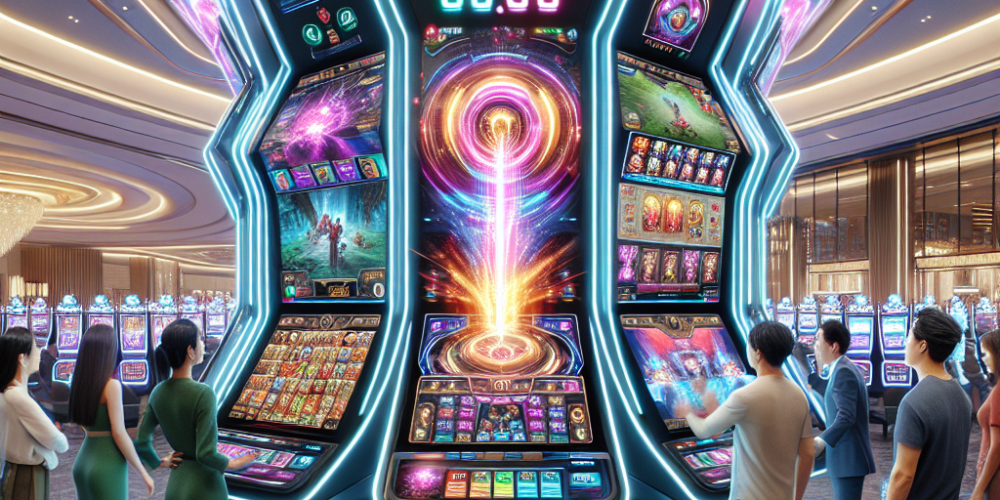In a groundbreaking move set to transform the casino floor, a major gaming technology company has unveiled its latest innovation in slot machine technology, which promises to enhance user experience through sophisticated integration of AI and advanced graphics. Dubbed “SmartSlots,” these next-generation machines were launched at the Global Gaming Expo in Las Vegas yesterday, signaling a new era for gamers and venues alike.
SmartSlots represent a significant leap from traditional slot machines, incorporating both artificial intelligence and advanced graphical interfaces to create a more interactive and engaging gaming experience. The machines utilize real-time learning algorithms to adapt game challenges and rewards to the player’s skill level and preferences, creating a personalized gaming environment that keeps players engaged longer than ever before.
This innovation comes at a critical time for the gaming industry, which has seen a gradual decline in slot machine revenues over the past decade due to market saturation and the aging demographic of traditional slot machine players. By introducing a high-tech solution that appeals to a younger, tech-savvy crowd, the industry hopes to rejuvenate interest and increase time spent at machines.
“The introduction of SmartSlots is not just an innovation; it’s a revolution in the casino gaming industry,” said Michael Spinner, CEO of Gametech Innovations, the company behind SmartSlots. “We are bringing a level of engagement and interaction that has never been seen before in slot machines. Our goal is to offer an immersive experience that feels more like video gaming and less like traditional gambling.”
Key features of the SmartSlots include a multi-layered graphics system that renders high-quality 3D images, providing a visually stunning interface that rivals the latest video game consoles. Additionally, the integration of AI allows the machine to offer dynamic game scenarios that change according to the user’s interaction pattern. This technology not only increases the excitement of the games but also enhances the longevity of the machines’ appeal.
Security and responsible gaming have also been top priorities in the development of SmartSlots. The machines are equipped with advanced facial recognition software that can identify and assist in monitoring self-excluded players or those exhibiting signs of excessive gambling. Furthermore, these machines are capable of generating real-time data for casino operators, providing deeper insights into gaming trends and player behavior.
The industry’s response to the launch of SmartSlots has been overwhelmingly positive, with several major Las Vegas casinos already committing to significant orders. Casino operators are keen on leveraging the new technology to attract a broader audience and provide a novel gaming experience that differentiates them from competitors.
“SmartSlots are a game-changer, literally and figuratively,” said Lisa Hartford, VP of Gaming Operations at The Palazzo Resort in Las Vegas. “We believe these machines will not only attract a younger audience but also delight our existing customers with their innovative features. We are excited about the potential transformation this brings to our gaming floors.”
From a market perspective, the launch of SmartSlots is expected to drive new growth in the global slot machine market, which has been stagnant in recent years. According to industry analysts, this new technology could potentially increase slot machine revenues by up to 30% over the next five years as more casinos adopt these advanced systems.
As the buzz around SmartSlots continues to grow, it is clear that the future of slot machines is here. With a perfect blend of technology and entertainment, these machines are set to redefine the gaming experience, making it more immersive, interactive, and inclusive. As the digital and real-world conflate, the casino floors are prepared to offer an unprecedented gaming experience that matches the evolving consumer expectations.

Karine Gomez is an enthusiastic writer and avid gamer with a particular love for PlayStation and casino gaming. Her deep knowledge of gaming trends and casino dynamics makes her articles both informative and engaging. Karine’s passion for PlayStation games and her firsthand experience with casino play shine through in her writing, offering readers authentic insights and valuable tips.

